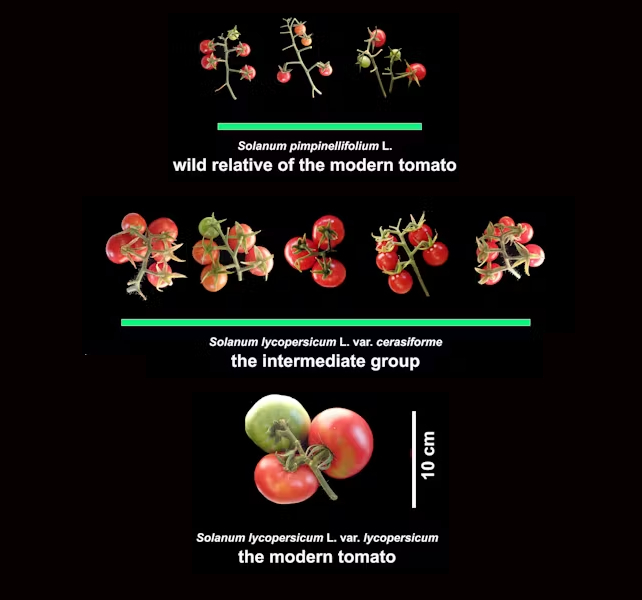Rumored to have killed the Roman emperor Augustus, nightshade's berries are notoriously deadly. Tomatoes belong to the same plant family, Solanaceae, and produce toxic steroidal glycoalkaloids too.
Yet, generally, tomatoes don't kill us.
Once believed to be poisonous, tomatoes (Solanum lycopersicum) actually convert their bitter toxins into something more palatable and less deadly. Sichuan University biologist Feng Bai and colleagues have now identified the genetic mechanisms involved in the tomato fruit's safe transformation.

Solanaceae make use of steroidal glycoalkaloids as a natural defense against pests. These molecules are thought to mess with animal cell membranes, damaging them and eventually causing cell death.
Potatoes, another member of this toxic family, have been cultivated to have safe levels of these compounds, though they can pump them out when damaged or exposed to large amounts of light.
In humans, this glycoalkaloid substance tastes unpleasantly bitter. Ingesting too much leads to a burning sensation in the mouth, followed by symptoms including nausea, cramps, slow pulse and reduced breathing, vomiting, diarrhea, internal bleeding, and stomach lesions.
But these same plants also need their seeds dispersed, and animals are great at this. So in some of the plants, as their seed-bearing fruits ripen, the bitter toxic chemicals are converted into something more palatable to entice pooping seed taxis.
Bai and team discovered that in tomatoes, the chemicals that make the fruits redder, softer, and sweeter also coordinate the breakdown of the toxic glycoalkaloid into a less toxic compound called esculeoside A.
"[This helps] ensure that high levels of toxic steroidal glycoalkaloids remain in immature fruits to maintain resistance against herbivory attacks, guaranteeing that the fruits reach the seed maturation stage," the team explains in their paper.
The deliciously fruited plants make use of epigenetic regulation to control the cascade of changes required to make their bounty safe for us to eat.
Specifically, a protein called DML2 allows the cell's gene-reading machinery to access genes involved in stopping the toxins by removing methyl groups, which act as molecular signals, from a specific part of the genetic chromosome – a process called demethylation.
When the researchers genetically disabled the creation of DML2 in the tomatoes, the fruit produced still contained high levels of the steroidal glycoalkaloids.
By comparing the genes involved in other related plants, Bai and team also found DML2-driven DNA demethylation increased during the tomato plant's domestication, which changed the plants from small berry producers to large red fruit creators.
Meanwhile, the levels of genes supporting steroidal glycoalkaloids also decreased. Now, even green tomatoes can be safely eaten in moderation.
These changes ultimately made this gut-protecting crop healthier for us all to devour, and in return, we spread tomatoes across new continents.
This research was published in Science Advances.
